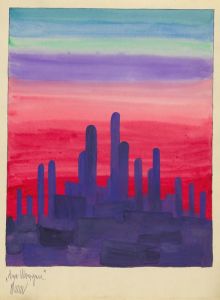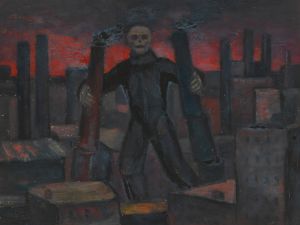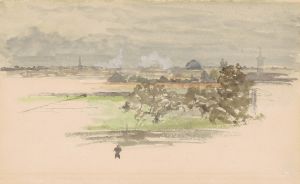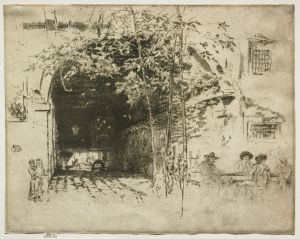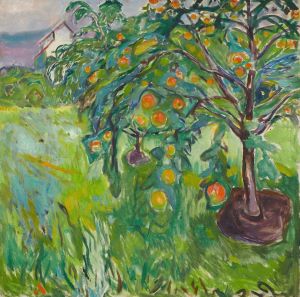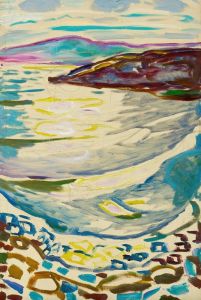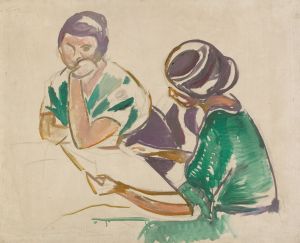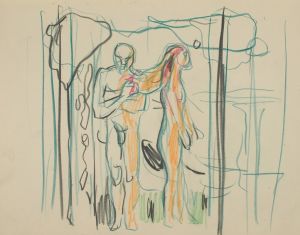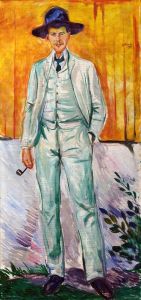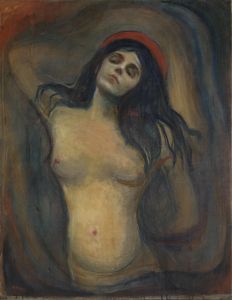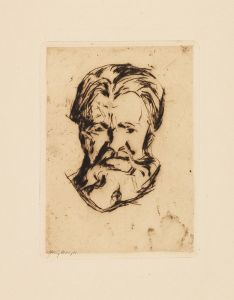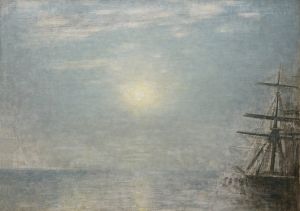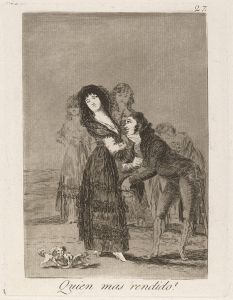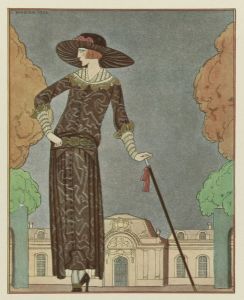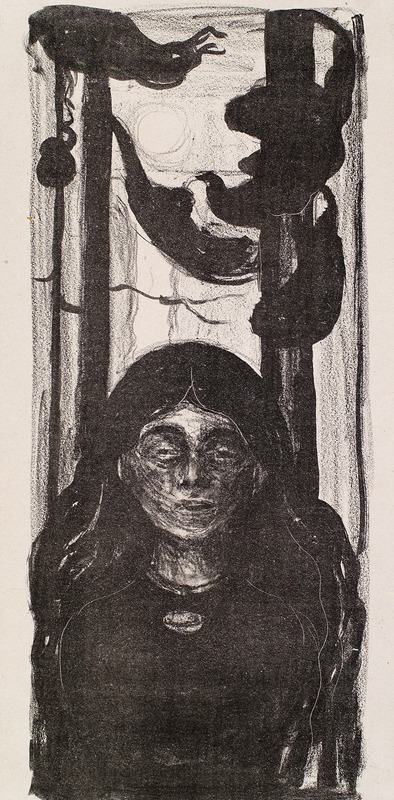
Evening
A hand-painted replica of Edvard Munch’s masterpiece Evening, meticulously crafted by professional artists to capture the true essence of the original. Each piece is created with museum-quality canvas and rare mineral pigments, carefully painted by experienced artists with delicate brushstrokes and rich, layered colors to perfectly recreate the texture of the original artwork. Unlike machine-printed reproductions, this hand-painted version brings the painting to life, infused with the artist’s emotions and skill in every stroke. Whether for personal collection or home decoration, it instantly elevates the artistic atmosphere of any space.
Edvard Munch, a Norwegian painter and printmaker, is renowned for his significant contribution to the Symbolist movement in the late 19th and early 20th centuries. His work often explored themes of existentialism, love, anxiety, and death, reflecting his personal experiences and emotional turmoil. One of his lesser-known works is "Evening," which, like many of his paintings, captures the mood and atmosphere of a particular time of day, imbued with emotional depth.
"Evening" by Edvard Munch is a painting that exemplifies his unique style, characterized by bold colors, dramatic compositions, and an emotional intensity that seeks to convey the psychological state of the subject or scene. Munch's use of color and form in "Evening" is typical of his approach, where he often employed swirling lines and vibrant hues to evoke a sense of movement and emotion.
The painting is believed to depict a tranquil yet introspective scene, capturing the transition from day to night. Munch often used the time of day as a metaphor for the human condition, with evening symbolizing the end of a cycle, introspection, and the quiet contemplation that comes with the fading light. This thematic exploration is consistent with Munch's broader oeuvre, where he frequently delved into the complexities of the human psyche and the passage of time.
Munch's technique in "Evening" likely involves his characteristic use of oil paints, applied with a fluidity that allows for the blending of colors and the creation of atmospheric effects. His brushwork, often expressive and loose, contributes to the overall mood of the painting, inviting viewers to engage with the emotional undercurrents present in the scene.
While specific details about "Evening" such as its exact date of creation, dimensions, and current location might not be as well-documented as some of Munch's other works, the painting nonetheless holds a place within his extensive body of work that continues to be studied and appreciated for its emotional resonance and artistic innovation.
Munch's influence on modern art is profound, with his exploration of psychological themes and innovative use of color and form paving the way for later movements such as Expressionism. His ability to convey deep emotional states through his art has left a lasting impact on both his contemporaries and subsequent generations of artists.
In summary, "Evening" by Edvard Munch is a testament to the artist's skill in capturing the subtleties of human emotion and the passage of time. Through his distinctive style and thematic focus, Munch invites viewers to reflect on the complexities of life and the introspective moments that define the human experience.





